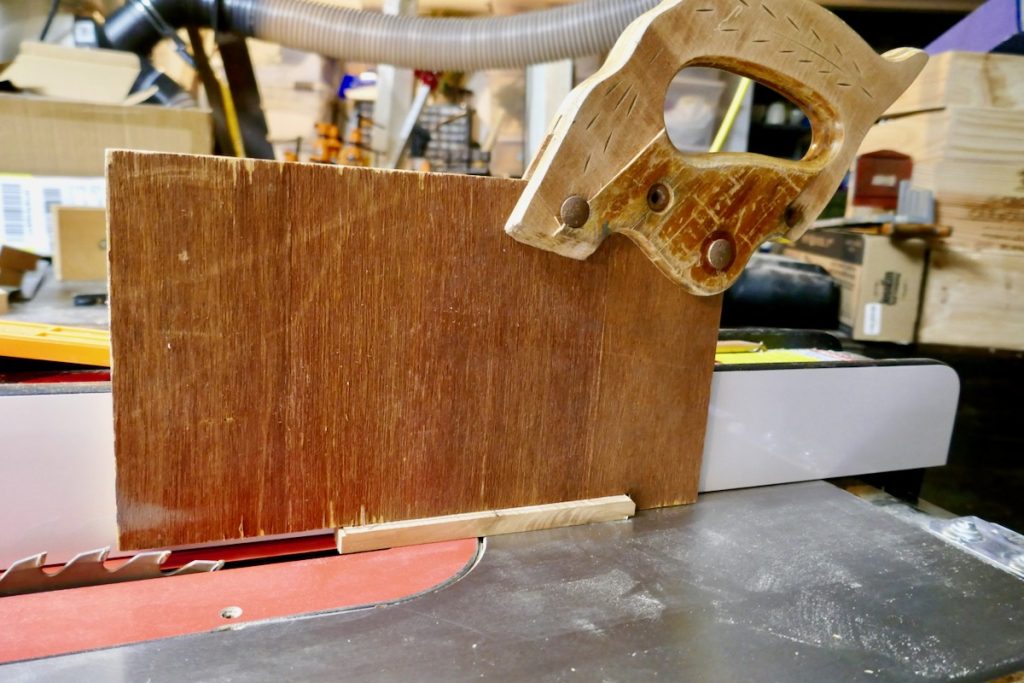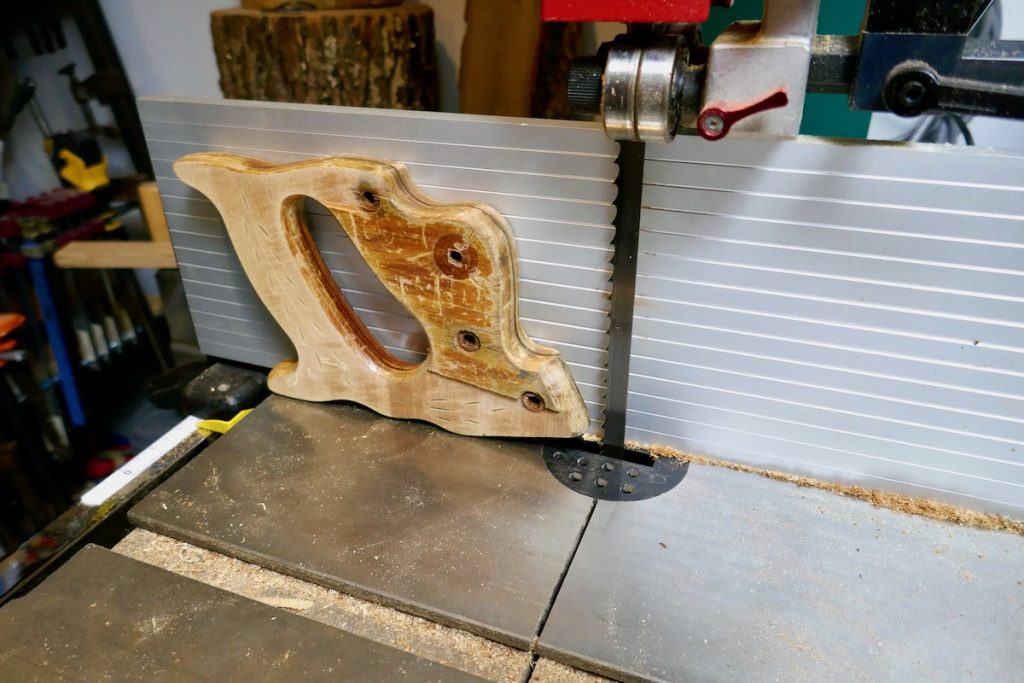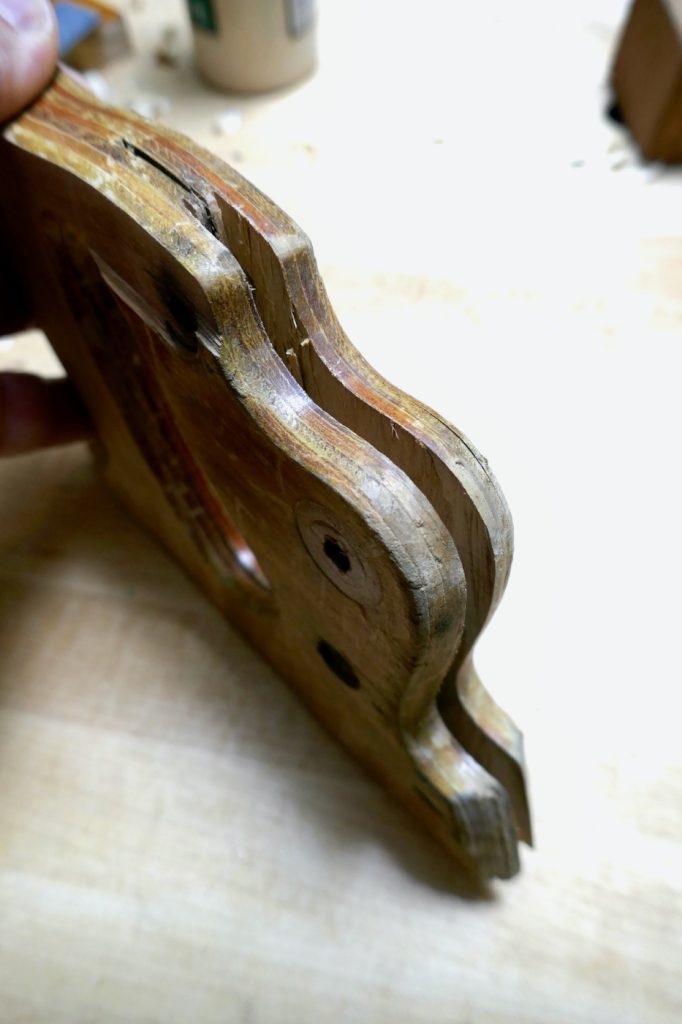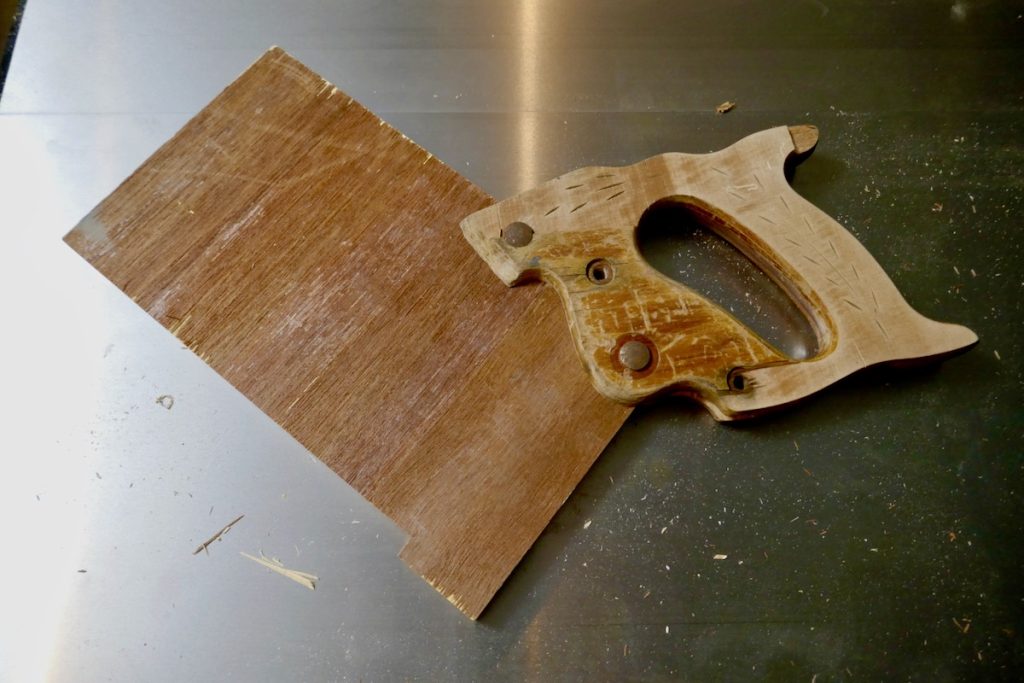We may receive a commission when you use our affiliate links. However, this does not impact our recommendations.

I have two kinds of push sticks I use all the time. The first is the excellent Big Horn 10230 orange plastic push stick which is good for anything wider than ⅞” (otherwise, you’ll be risking grooving its sole). The Big Horn stick has a handy spring-loaded heel that adjusts to the thickness of the material I rip and a rubbery sole that adds good traction and control over the workpiece.
My other push stick is a makeshift ¼” thick (or ⅜”) plate that I cut to look somewhat like the Big Horn design. It had a long straight (unfortunately no rubber) sole with a ½” heel at its end. I have been using this push stick to help me with stock thinner than ¾”. This second design is totally sacrificial, and once the plywood sole has been grooved too much, I bring it back to the band saw to cut a fresh line + heel.
But with all my efforts to make the second design as comfortable to use as the Big Horn, one thing was always missing: the nice grippy handle, which I couldn’t realistically reproduce every time and out of the thin plywood stock. But recently, I had an idea: what if I find an old handsaw handle, such as the one I often see on the side of the road on those bulk trash pickup dates that happen four or so times a year in our village and use it over the sacrificial plywood push stick. I wouldn’t think of cannibalizing a nice handsaw that can be restored. I am talking about releasing a flaky handle from its bondage to a badly rusty blade and reusing it. And indeed, a few weeks ago, I found such a handle. It belonged to a newer Stanley saw whose blade was shaped along the Japanese pattern, and its teeth I could not sharpen as they were impulse-hardened.
The handle was made of plywood and was missing some segments – but for me, this was the perfect handle.


After shaping the plywood sole plate with the heel at its rear, I unscrewed the handle from the saw blade. I brought it to the band saw to widen the groove to about ¼”. Now, if you shaped the sacrificial plywood plate from ¼” stock, you are good to go; tuck it into this new and broader kerf and secure it with the original screws. If your stock is wider than the kerf, rabbet the plywood stock (make a shoulder or two on both top edges) and slide it home into the handle.


This new design is like eating the cake and having it too. On the one hand, you have a nice handle connected to a thinner – but still very sturdy – push stick; on the other hand, you don’t bother as the lower part of the stick gets consumed overtime by the table saw – as you can quickly reestablish the baseline, and once the sacrificial panel gets too small, it’s so easy peasy making another one. So now I have a perfect due to push material safely over my table saw blade. Give it a try, and I promise you that you will love this arrangement too.
P.s. If you can’t find an old saw handle, consider making one from a sandwich of three parts. Get the paten from one of your saws, cut the left and right cheeks and then the inner one, glue them together, trim, and send the excesses. Remember to shape the middle piece smaller and match its thickness to the plywood sole plate you intend to use.
Here are some supplies and tools we find essential in our everyday work around the shop. We may receive a commission from sales referred by our links; however, we have carefully selected these products for their usefulness and quality.








